Vitalarmor® Lactoferrin
Vitalarmor® Lactoferrin is a glycoprotein naturally found in human and animal milk.
Armor Proteins is an expert in the production and marketing of lactoferrin. It is highly purified thanks to a gentle and controlled process allowing a native form preserved.
We have developed a range of lactoferrin specifically adapted to the different specifications:
– Vitalarmor® Lactoferrin and Vitalarmor® Lactoferrin Organic particularly suitable for use in dry-mix infant nutrition
– Vitalarmor® Lactoferrin that you can use in food and nutrition supplements
- Antibacterial
- Antioxidant
- Immunomodulatory

What is lactoferrin?
Lactoferrin is a glycoprotein of about 690 amino acids belonging to the transferrin family, that is, it binds to iron. It occurs naturally in human and animal milk.
Lactoferrin was discovered in 1939 in cow’s milk and isolated in 1960 in cow’s milk and human milk. Dairy products are the only source of lactoferrin in the diet. They are found in milk at 150 mg/litre. In Europe, lactoferrine from cow’s milk was authorised as novel food [1] in 2012.
It is in human colostrum, the first breast milk, that lactoferrin is present in greater quantities ( 8 g/L).
Lactoferrin is also present in different concentrations in different body fluids such as tears, saliva, vaginal secretions, seminal fluid, etc.
Lactoferrin is secreted by the cells of the epithelial glands as well as by neutrophils, cells that belong to the family of white blood cells and form the body’s first line of defence against bacterial infections.
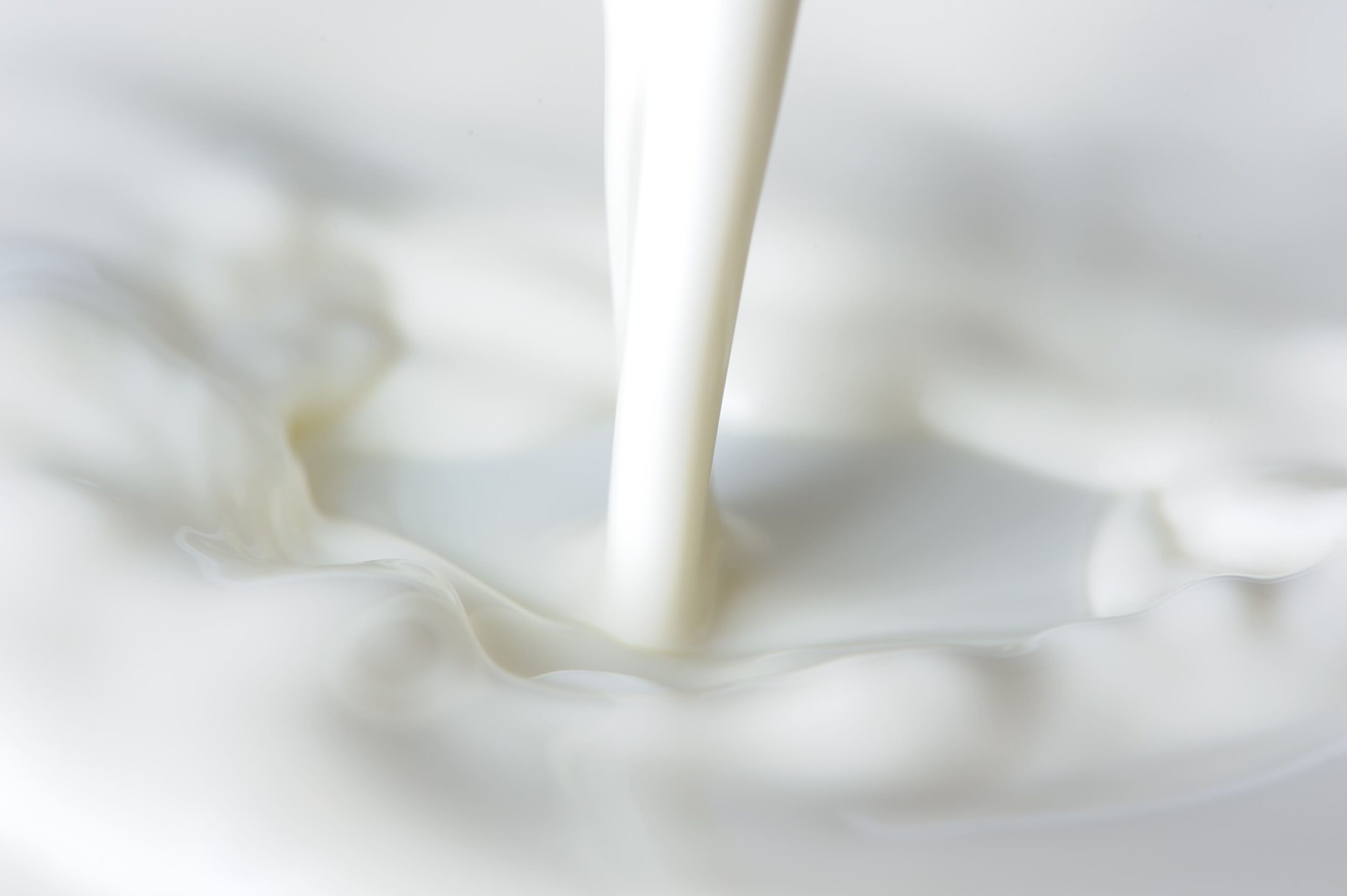
The major actions of lactoferrin
The benefits of lactoferrin are multiple and have several properties:
– It regulates the homeostasis of iron
– It has multiple and important effects: it is antioxidant, anti-inflammatory, antimicrobial and immunomodulatory
These properties are largely mediated by the ability of lactoferrin to bind iron.

A strong capacity to fix iron
Iron is an essential nutrient for cell growth and proliferation. It is also a component for DNA replication and energy production.
As a result, iron is used by the body for its own development and functioning as well as by micro-organisms in the body.
However, iron can become toxic when present in too large quantities, leading to the generation of free radicals between its most common forms Fe2+ and Fe3+. The free radical Fe3+, when present regularly and in large quantities, can cause tissue damage and organ failure by damaging a number of cellular components, including DNA, proteins and membrane lipids.

The structure of lactoferrin consists of two homologous lobes.
Due to this structure, lactoferrin is able to reversibly chelate two Fe3+ ions per molecule via an iron binding site in each of its lobes.
Lactoferrin can then adopt two conformational states: the iron-free form, called apo-lactoferrin or the form containing iron, called holo-lactoferrin.
Indeed, in the presence of iron, lactoferrin can take up iron molecules and adopts a closed structure of its two lobes (holo-lactoferrin) whereas the apo-lactoferrin form has its two lobes open, without iron. Each form has a specific action on the body and activates certain biological mechanisms.
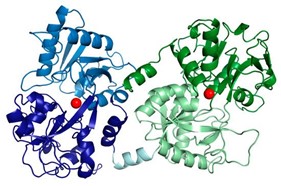
Antioxidant properties
Lactoferrin has a significant regulatory activity of cell oxidation through the regulation of key anti-oxidant enzymes.
In addition, its ability to bind to iron also prevents the harmful effects of oxidative stress caused by the presence of Fe3+ by disrupting the production of the latter.
Oxidative stress plays a role in many chronic degenerative processes, such as inflammation, aging and obesity.

Antibacterial and antiviral properties
The bacteriostatic and bactericidal activity of lactoferrin against a large number of microorganisms is due to two distinct mechanisms :
1/ The bacteriostatic effect comes from the fixation and sequestration of free iron Fe3+ by lactoferrin at the sites of infection, thus depriving the bacteria of this substrate essential for their growth
2/ The bactericidal effect is possible, through the direct interaction of lactoferrin with bacteria that allow : rupture of the bacterial cell membrane, proteolysis of microbial virulence factors, inhibition of microbial adherence to host cells.
The sequestration of iron by lactoferrin also prevents the formation of biofilm, a crucial step in the development and persistence of infections.
Lactoferrin has an effective response to a wide range of bacteria, including Streptococcus, Salmonella, Shigella, Staphylococcus and Enterobacteria, as well as fungi, parasites and viruses.
In particular, recent in vitro studies have shown that lactoferrin can also exert this effect on SAR-VOC and SAR-VOC-2 viruses. [2] [3]

An anti-inflammatory action
Inflammation is a complex process involving many mediators and various types of cells, in response to both microbial and non-material lesions. If inflammation is not quickly limited, it can cause damage by establishing systemic and even chronic inflammatory conditions.
Lactoferrin exerts anti-inflammatory properties by interacting with certain immune cells including monocytes and macrophages.
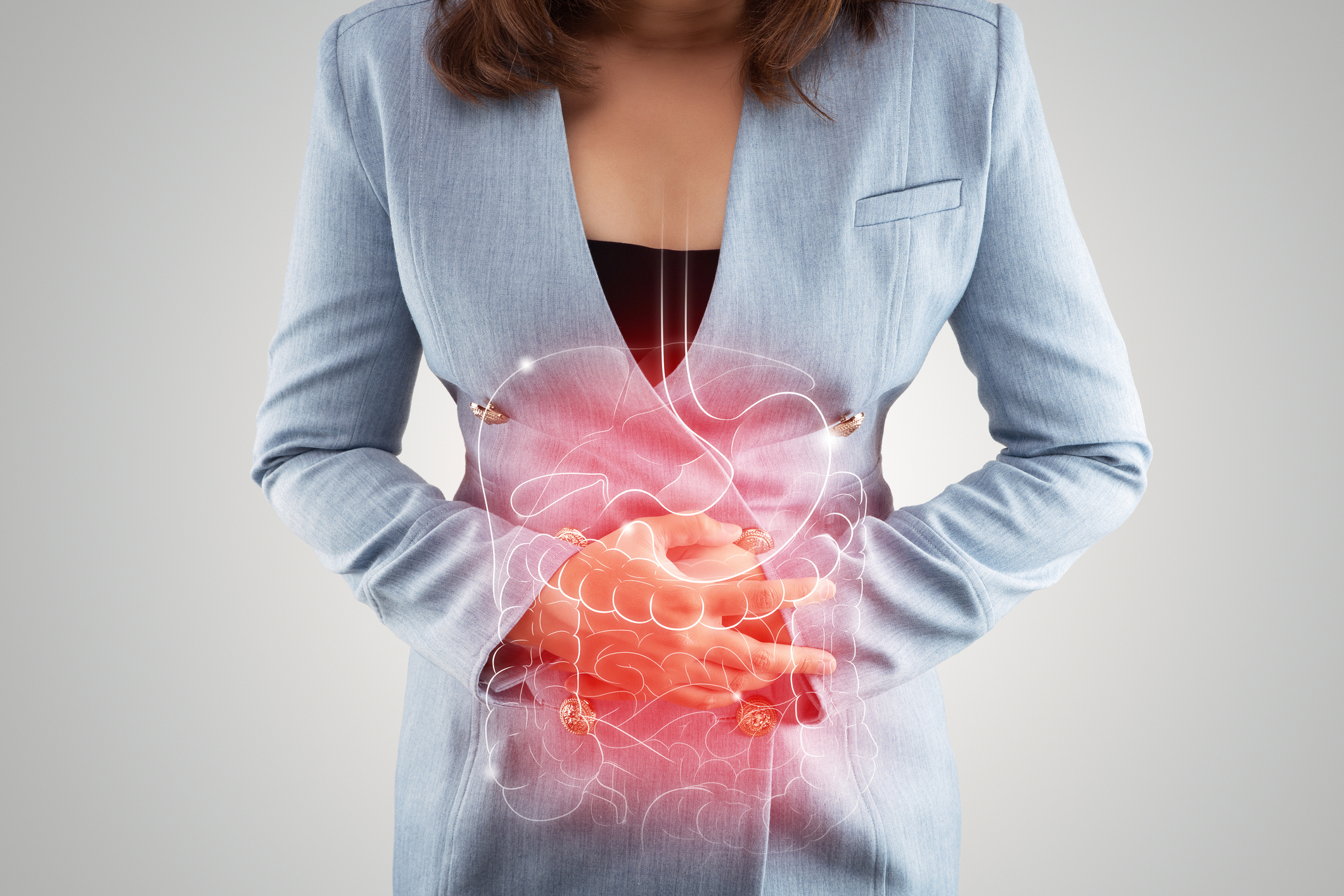
Immunomodulatory properties
Lactoferrin plays a role in the differentiation, maturation, activation, migration, proliferation and functioning of several types of immune cells (B cells, neutrophils, monocytes, macrophages, dendritic cells).
Lactoferrin can also stimulate the production of antibodies by lymphocytes.
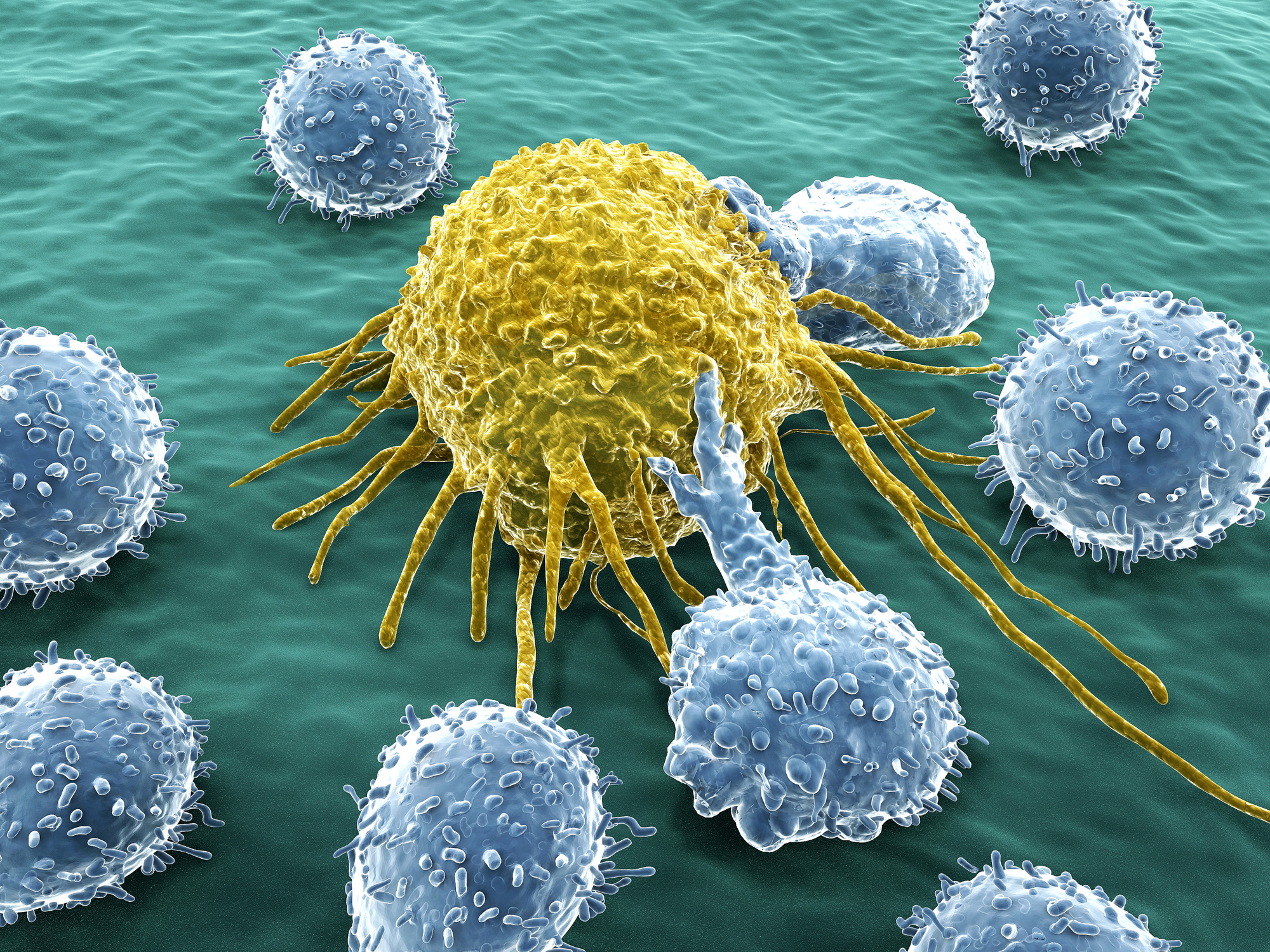
Lactoferrin as an answer to different health needs
Thanks to its strong ability to fix iron and its 5 properties (antioxidants, antibacterial, antiviral, anti-inflammatory and immunomodulatory), lactoferrin could meet various health needs. It could intervene in particular in infant metabolism, during maternity, for neuronal development, at the level of the intestine, in the regulation of iron in the body, to improve respiratory diseases, for oral hygienedental, for skin health, to improve lipid metabolism and help reduce osteoporosis.
Here are the health areas concerned by the action of lactoferrin
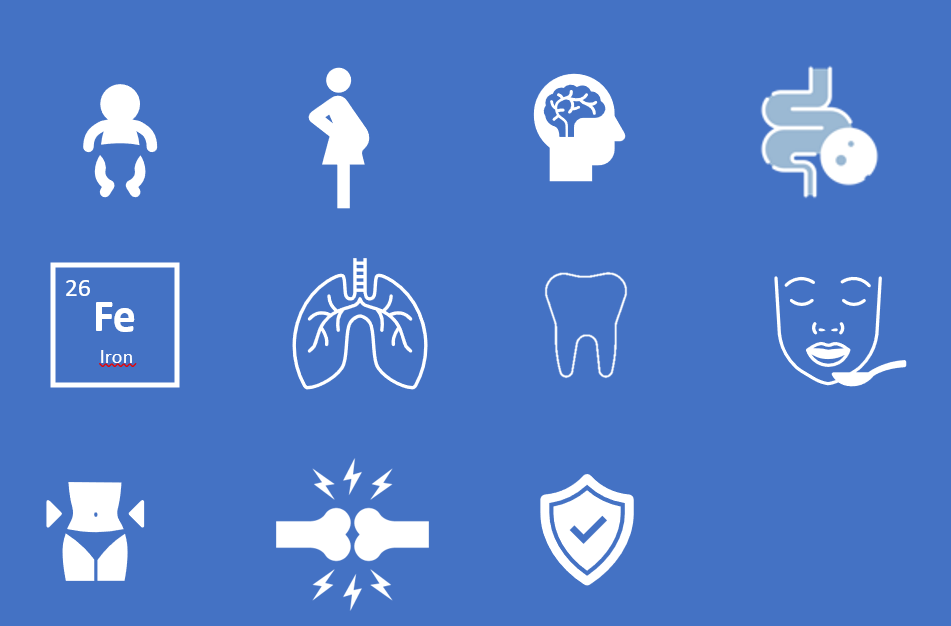
The lactoferrin market and growth prospects
Historically used in infant milk formulas to support infant immunity, the infant nutrition market now accounts for 45% of lactoferrin use worldwide (Girafood, June 2022). It has particularly appealed to parents in China, who consider it a high quality ingredient in infant milk formulas. Indeed, it is known by nearly 64% of parents in China. Still unknown in France, its notoriety is only 15% (FMCG Gurus, 2022).
With the onset of Covid, consumers around the world have sought to protect themselves and increase their immunity through food, sports or supplementation. During this period, many consumers have decided to act for their health by consuming dietary supplements to improve their health. Consumers have increased their desire to increase immunity by 10% in the coming years. The need for lactoferrin to boost immunity has increased from 67% in 2020 to 76% in 2022 (FMCG Gurus, 2020-2022). In future years, lactoferrin will certainly be a growth reservoir in the food supplement, cosmetic, oral hygiene and food markets.

Bibliographic sources
[1] Novel food (or new ingredient): any food or ingredient that has no history of consumption in the European Union prior to May 15, 1997. Novel foods are defined in EU Regulation 2015/2283. Any food or food ingredient that meets the definition of Regulation 258/19978 must be the subject of an application for authorisation.
[2] Jianshe Lang, Ning Yang, Jiejie Deng, Kangtai Liu, Peng Yang, Guigen Zhang, Chengyu Jiang (2011). Inhibition of SARS pseudovirus cell entry by lactoferrin binding to heparan sulfate proteoglycans. PLoS One.
[3] T., Kadambi, N.S., Amin, A.T., O’Meara, T.R., Pretto, C.D., et al. (2020). Morphological Cell Profiling of SARS-CoV-2 Infection Identifies Drug Repurposing Candidates for COVID-19. BioRxiv.
Market application

Discover more Bioactive proteins
Quality & Traceability



to the finished product


